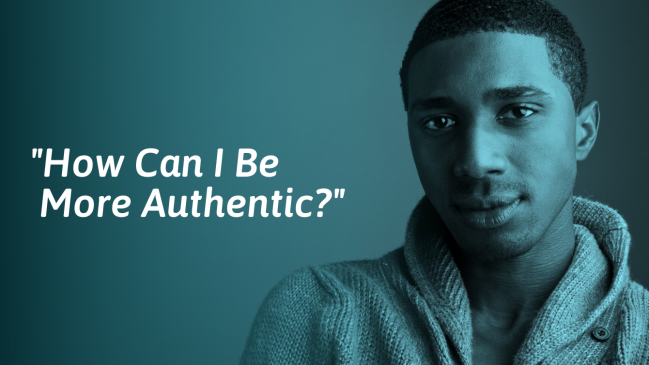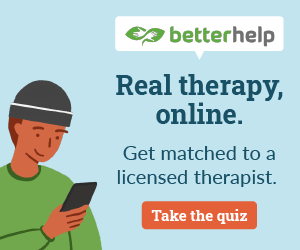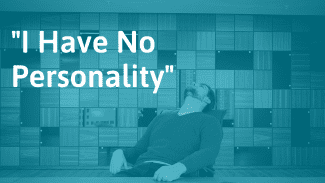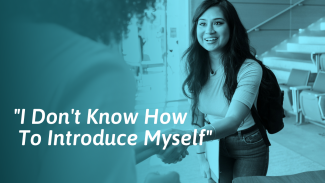People love to give advice like, “Just be yourself,” but you might wonder what that really means. What if you don’t know how to be yourself? How can you not be fake if you don’t even know who you are?
It might seem like these questions are the source of your problem, but the fact that you are asking them is a good sign. It means you are further along than a lot of other people, who spend their lives running away from reflective questions like these.
This article provides a deep dive into self-discovery, helping you uncover why you don’t feel authentic and what you can do to change this, interacting in a more genuine way with others.
What is authenticity?
Authenticity involves knowing and showing who you are. Knowing yourself means understanding your personality, communication style, and the things you like and don’t like. Knowing who you are also means understanding your thoughts, feelings, and desires. Usually, you feel inauthentic when your words and actions don’t line up with your inner thoughts, feelings, and beliefs.[1]
Here are some common experiences reported by people who don’t feel authentic:[2]
- “I don’t always know who the ‘real me’ is.”
- “I usually do what people expect or tell me to do.”
- “It’s hard for me to stand up for what I believe in.”
- “I don’t like how much I change around other people or when I’m in a relationship.”
- “I try too hard to fit in and get people to like me.”
- “I care too much what other people think of me.”
Why do you feel inauthentic?
Feeling inauthentic is often the result of either not knowing who you are or not liking who you are.[1] If you don’t know who you are, it can be impossible to tell whether you are being real or fake with people. If you don’t like who you are, you probably assume no one else will either. You might put a lot of effort into trying to be someone different from who you are.
When you understand your own thoughts, feelings, and behaviors, it’s much easier to tell when you are being real with people and when you are not. Self-awareness consistently shows up in the research on authenticity, suggesting that knowing yourself better is an essential first step towards being more real with others.[1, 2]
People who are authentic enjoy closer relationships and are healthier, happier, and more confident than people who feel inauthentic.[1, 2] Being more authentic is a process that involves: becoming more self-aware, learning to like and accept yourself more, and interacting in more genuine ways with people.[1, 2] Below, you will find activities and strategies to help you find your authentic self.
1. Use surveys and quizzes to learn about yourself
While there are hundreds of quizzes designed for discovering yourself, some are more reliable than others. Surveys developed and used by psychologists are much more reliable and can be useful in helping you become more self-aware.
Here are some reliable surveys to help you become more self-aware:
- The Big Five is a valid personality test that psychologists use to help identify personality traits and characteristics.
- Core values quizzes can help identify ingredients for a fulfilling and meaningful life.
- The Defense Style Questionnaire is a tested tool that can help you identify defense mechanisms you use, which may be holding you back.
- The Young Schema Questionnaire is another psychology test that can help you identify old stories and negative beliefs that may be holding you back.
- Career quizzes can help you identify your interests, strengths, and abilities to help inform important decisions about your career.
- Surveys like the PHQ-9 (depression survey) and GAD-7 (anxiety survey) are often used by counselors to identify underlying mental health issues.
- Use this authenticity scale to score how authentic you are with others.
2. Follow your feelings to find what matters
Another way to become more self-aware is to follow your feelings. Think of each emotion (even the “bad” ones) as clues about the things that matter to you. Each time you become angry, scared, excited, or upset, your emotions are trying to communicate with you. If you try to numb your feelings, ignore them, or do something that makes you feel better right away, you might not get the message they have for you.
The next time you have a strong emotional reaction, try using these skills to understand where the feeling is coming from:
- Name the feeling to yourself (e.g., notice shame when getting bad feedback at work)
- Locate the feeling in your body (e.g., identify a swirling, sick feeling in your stomach)
- Open up around the feeling (e.g., breathe and unclench that part, let the feeling be)
- Let it run its course (e.g., track the feeling until it slows down and gets still)
- Find the meaning (e.g., ask yourself, “what about this matters to me?” to identify that you feel this way because you care about doing a good job and want to succeed)
The more you are in touch with your feelings, the more you will understand who you are, what you care about, and what you need and want. Your feelings are clues about who you are and what matters to you (your core values). Being in touch with these core values will help you stay connected to your authentic self.[3]
3. Revise old stories
Like most people, you probably have a set of old stories you tell yourself about who you are. Stories are beliefs you form about who you are, what you can and can’t do, and what you “should” care about. Many of these form in childhood but continue to impact your view of yourself as an adult.
Some of the common old stories that hold people back include:
- Timelines: Start a career by 25, be married and own a home by 30, kids by 35
- Expectations: Expectations to become a doctor, lawyer, or work in the family business
- Conditions: Believing you can only be happy if or when you reach a certain goal
- Shoulds: Rules about what you should do, be, feel, or think
- Weaknesses: Beliefs about things you aren’t good at or can’t do
- Shame: Beliefs about being bad, different, or “never enough”
- Differences: Beliefs about not fitting in or having nothing in common with people
- Rules: Expectations about how things work out or don’t in the end, believing hard work always pays off, that you always get the short end of the stick, etc.
Old stories can limit and box you in and often lead you to form a biased opinion of yourself that can keep you from seeing your true self.[1] Identifying revising these storylines is a great way to see through these false versions of yourself and connect with your authentic self. Make sure your new stories are ones that help you change, grow, and connect with other people.
4. Be kinder to yourself
Being kinder and more accepting of yourself will make it easier to be real with people. Research shows that people reported being more authentic on days when they were more self-compassionate, suggesting that it is easier to be authentic when you like and accept yourself.[4]
By being kinder to yourself and more accepting of flaws, mistakes, and insecurities, you will be able to spend less time hiding these from others. This will allow you to relax and interact in ways that feel more natural and authentic. Research shows that self-compassionate people are happier, more confident, and have better relationships with people.[6]
Try these exercises to be kinder to yourself:[6]
- Try one of these self-compassion exercises like writing a self-compassion letter or learning to talk to yourself like you would talk to a friend.
- Develop a self-care routine that includes regular “you” time by doing activities you find relaxing or enjoyable.
- Reframe your mistakes as opportunities to learn, grow, and do better next time.
- Write yourself a “permission slip” to be less perfect, a little more selfish, or to do something nice for yourself.
5. Rethink your strengths and weaknesses
You might think about your strengths and weaknesses as opposites, but they are almost always connected. Strengths and weaknesses are just characteristics expressed in either a helpful or unhelpful way. Try making a list of your strengths and weaknesses, and then think of the upside of each weakness and the downside of each strength.
Use these examples to get started:
- Honesty could be a weakness if you are too blunt or direct, but a strength when it causes you to act with integrity.
- Loyalty could be a weakness if it causes you to put other people’s needs before your own or a strength that helps you stand out as reliable and trustworthy.
- Sensitivity could be a weakness when you take things too personally, but also a strength that helps you be more aware of your feelings and the feelings of others.
- Controlling could be a weakness when you try to control things outside of you, but a strength that helps you be cautious, organized, and on top of things.
- Laziness could be a weakness when you procrastinate but a strength that helps you be relaxed, laidback, and easygoing.
Your strengths and weaknesses are really just tools in your toolbox. A hammer can be used to build things, destroy them, or even as a weapon you use against yourself. It’s easier to accept your “flaws” when you see them as tools that can be helpful in certain situations.
6. Stop monitoring and judging yourself
According to research, people who feel inauthentic spend a lot of time self-monitoring, judging, and criticizing themselves.[5] You might feel like you have an inner hall monitor that watches and judges every thought, word, and action. When your hall monitor is around, you might be overly careful about everything you say or do, making it hard to be real with people.
You can free yourself from your hall monitor using these tips:[3, 4]
- Focus outward: Ignore your hall monitor by focusing your attention on others instead of yourself. Each time you find yourself getting stuck in your head, gently bring your focus back to the other person.
- Use your 5 senses: Get out of your head by becoming more aware of where you are, focusing on sights, sounds, smells, tastes, and things you can feel.
- Use mindfulness: Distance yourself from unhelpful thoughts by imagining each thought is like a cloud that you can observe and watch float away.
- Give your monitor a break: Imagine yourself walking up to your hall monitor and saying, “You’ve been working hard… Why don’t you take the rest of today off.” Each time you catch it working, remind it that it’s supposed to be on break.
7. Stop trying to fit in
Bestselling author and social worker Brene Brown says that fitting in means trying to be more like other people to get accepted, instead of being able to just be yourself. This isn’t the way to be authentic, and also won’t ever lead you to feel truly accepted.[7]
While social situations require you to adapt your behavior to a certain degree to fit in, the reason you don’t feel genuine may be that you are being too adaptable. This is a sign that you are trying too hard to fit in and are probably not being true to yourself. When you focus more on being real instead of being liked, it’s easier to be authentic.
8. Break the rules
If you struggle to be genuine at work or in relationships with people you just met, it might be because you are following a rigid set of “rules” for social situations. While these rules are usually intended to keep you safe from rejection, they can also become a prison that locks up the real version of you and prevents anyone from getting in.
Some of the most common social rules that keep people from being genuine include:
- Rehearse everything you say: Instead of rehearsing each “line,” try going off script and letting more of your unfiltered thoughts become words.
- Don’t talk about yourself: You don’t have to overshare with people you just met, but you should be willing to share some personal information about yourself.
- Agree with everything: While you might have an urge to agree with everything people say, do a gut check first. If you disagree, don’t nod and smile or say, “exactly!,” just stay quiet or politely state your opinion.
- Play it cool: Acting indifferent is not likely to help you attract friends and become a people magnet. In fact, it can push people away and trigger their own insecurities.
- Self-monitor: Keeping your focus only on yourself can prevent you from picking up on social cues and can also feed into your anxiety, making it worse. Instead, try focusing outward on other people or your surroundings instead of on yourself.
When you rely too much on rules like these, your conversations can feel forced or awkward. Breaking the rules can be scary at first, but it can help you be more authentic and real with people and will help conversations flow more naturally.
9. Be more transparent
The final step towards being more real with others is to change the way you interact with them. Work on being more open, honest, and real with people you talk to online, on social media, and in real life. Being more transparent means letting other people see more of you.
This includes providing them with windows into your mind, your life, and eventually your emotions. You might not realize how much time and effort you put into hiding yourself and keeping people out and how much this is contributing to feeling inauthentic. By letting people in, you can feel more authentic while also creating opportunities for deeper, more meaningful connections with people.[7]
You can work on being more transparent by:
- Get personal: Let people see parts of yourself you normally hide. This might be personal information about your family, where you are from, weird hobbies you have, or even a quirky sense of humor.
- Make your intentions known: If you want something, you might beat around the bush instead of just asking someone directly. If you want to make friends with someone, you can show them by talking to them more, asking them to hang out, or showing interest in getting to know them.
- Use I-statements: Being more direct with people and using I-statements to say how you feel, what you think, or what you want or need can help you feel more authentic. For example, saying, “I was just thinking…” or, “I’m getting the feeling that…” gives people an invitation to your inner world.
Final thoughts
Authenticity is an essential component of wellbeing and is proven to be important for forming real, meaningful relationships with others.[1, 2, 3, 7] By working to understand yourself better, like yourself more, and change old negative beliefs about yourself, you can become more self-aware. By opening up, relaxing, and letting people get to know more about you, you will be able to interact with people in ways that feel more authentic.
Common questions about being authentic and genuine
What does it mean to be real?
Being real is different for everyone because it means being yourself. Being open about how you feel, what you think, and what you want are all components of being real with people.
How will I know I’m being authentic?
You will know you are being authentic when you don’t feel as dishonest or fake around other people and when you don’t try to hide, mask or change yourself to fit in or get people to like you.







